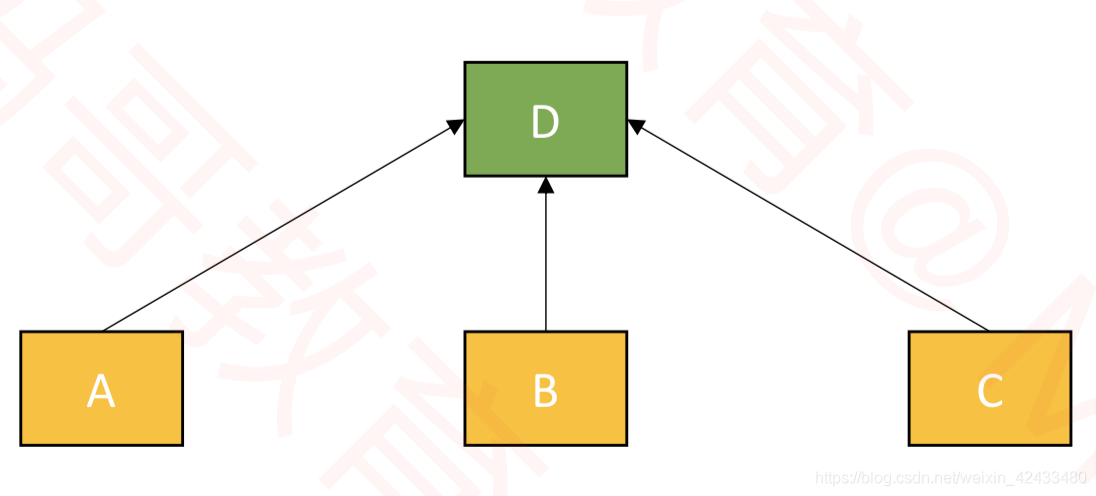面向协议编程
- 面向协议编程(Protocol Oriented Programming,简称POP)
- 是Swift的一种编程范式, Apple于2015年WWDC提出
- 在Swift的标准库中,能见到大量POP的影子
- 同时,Swift也是一门面向对象的编程语言(Object Oriented Programming,简称OOP)
- 在Swift开发中,OOP和POP是相辅相成的,任何一方并不能取代另一方
- POP能弥补OOP一些设计上的不足
回顾OOP
- OOP的三大特性:封装、继承、多态
- 继承的经典使用场合
- 当多个类(比如A、B、C类)具有很多共性时,可以将这些共性抽取到一个父类中(比如D类),最后A、B、C类继承D类

OOP的不足
- 但有些问题,使用OOP并不能很好解决,比如
- 如何将BVC、DVC 的公共方法run 抽取出来?

- 基于OOP想到的一些解决方案?
1. 将run方法放到另一个对象A中,然后BVC、DVC拥有对象A属性
缺点:多了一些额外的依赖关系
2. 将run方法增加到UIViewController分类中
缺点:UIViewController会越来越臃肿,而且会影响它的其他所有子类
3. 将run方法抽取到新的父类,采用多继承?(C++支持多继承)
缺点:会增加程序设计复杂度,产生菱形继承等问题,需要开发者额外解决
POP的解决方案

- 更复杂的情况:把B2和C1的共有方法抽取到protocol

POP的注意点
- 优先考虑创建协议,而不是父类(基类)
因为类会优先想到继承,会影响到面向协议编程
- 优先考虑值类型(struct、enum),而不是引用类型(class)
扫描二维码关注公众号,回复:
14574615 查看本文章


- 巧用协议的扩展功能
比如可以将协议里的方法实现写在扩展里
- 不要为了面向协议而使用协议
利用协议实现前缀效果


Base:类


Base:协议

利用协议实现类型判断
func isArray(_ value: Any) -> Bool {return value is [Any]}
func isArray1(_ value: Any) -> Bool {return value is Array<Any>}
print(isArray([1, 2])) //true
print(isArray(["1", 2])) //true
print(isArray(NSArray())) //true
print(isArray(NSMutableArray())) //true
print(isArray1([1, 2])) //true
print(isArray1(["1", 2])) //true
print(isArray1(NSArray())) //true
print(isArray1(NSMutableArray())) //true
protocol ArrayType { }
extension Array: ArrayType {}
extension NSArray: ArrayType{}
func isArray2(_ type: Any.Type) -> Bool {
return type is ArrayType.Type
}
print(isArray2([Int].self)) //true
print(isArray2([Any].self)) //true
print(isArray2(NSArray.self)) //true
print(isArray2(NSMutableArray.self)) //true